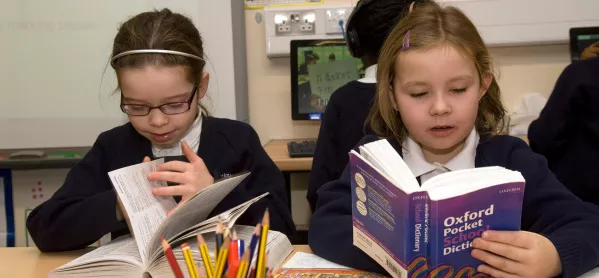“I don’t know what this word means, Miss! Can you tell me?”
“Look it up in the dictionary!”
As a secondary English teacher, this is something I have often heard myself say. Whether it’s to redirect the student while I am working with another child, to promote independence and study skills or, sometimes, to save face when I don’t know the meaning either, by replying in this manner I am assuming that my students know how to use these reference books properly.
Study skills: MS Word hacks: 6 ways to supercharge this everyday tool
Technology: Why I’ve ditched my phone - in school anyway…
Opinion: Do we really have to teach children to write proper?
This is an assumption that I should not make: modern technology has removed the need to know how to use dictionaries and thesauruses. A quick internet search can tell students all they need to know about a word.
They can find multiple definitions, synonyms and antonyms simply by typing it into the Google search bar. This even provides the origin of the word and its use over time, if they’re interested.
With the wonderous world of words available so easily and freely on our smartphones, I wonder how many households even keep physical dictionaries on their bookshelves anymore.
But our students are going to come across unknown words on a regular basis in class, when they won’t be able to look up the meaning on their phones. And so it seems prudent to dedicate time to teaching this crucial life skill in lessons.
Here are my top tips for using dictionaries and thesauruses.
ABC is key
It seems obvious, but students must be able to recite the alphabet from start to finish in order to use a dictionary well. They should also be able to identify the letters around a single letter; so if you say “m”, students should be able to tell you that it sits between k, l, n and o, somewhere in the middle of the alphabet.
This skill relies heavily on students’ memory and ability to spell, and is not something we should assume that all children are capable of doing without practice.
Utilise guide words
On every page (usually on the top left and in the top middle) dictionaries and thesauruses contain guide words. These words, which are typically in bold, are designed to help students identify the spelling patterns of words on that particular page.
It is important that we teach students to understand this and to utilise these words as it will help to speed up the process of searching for words in these texts.
Be clear about word class
An issue that students often have when they search for a word is whether the definition they have found fits the context in which they are reading or using it.
For instance, the word “obscure” can be used as an adjective to describe something uncertain, or as a verb to describe something being covered or concealed.
If the student is not able to identify the correct definition for the context, then it can lead to all sorts of misunderstandings and comprehension problems.
It is prudent, therefore, to ensure that students are able to recognise whether a word is a noun, verb, adjective or adverb and so on.
Synonym spectrums
We’ve all come across a piece of student writing absolutely littered with complex vocabulary used horribly inaccurately - probably the outcome of an English language GCSE that rewards ambitious vocabulary choices in two separate assessment objectives.
Students are keen to upgrade their vocabulary, and this should be encouraged. However, we must make it clear that not all synonyms are interchangeable with one another and they are therefore not relevant in all instances.
In his blog, Mark Roberts (@mr_englishteach) offers word spectrums as a method of helping students to explore words and evaluate a writer’s word choices. We can take this idea and apply it to thesaurus use.
By creating a continuum for the word “hot”, for example, students can explore different meanings of the synonyms offered by the thesaurus: warm, scalding or blistering.
Laura Tsabet is lead practitioner of teaching and learning at a school in Bournemouth. She tweets @lauratsabet





